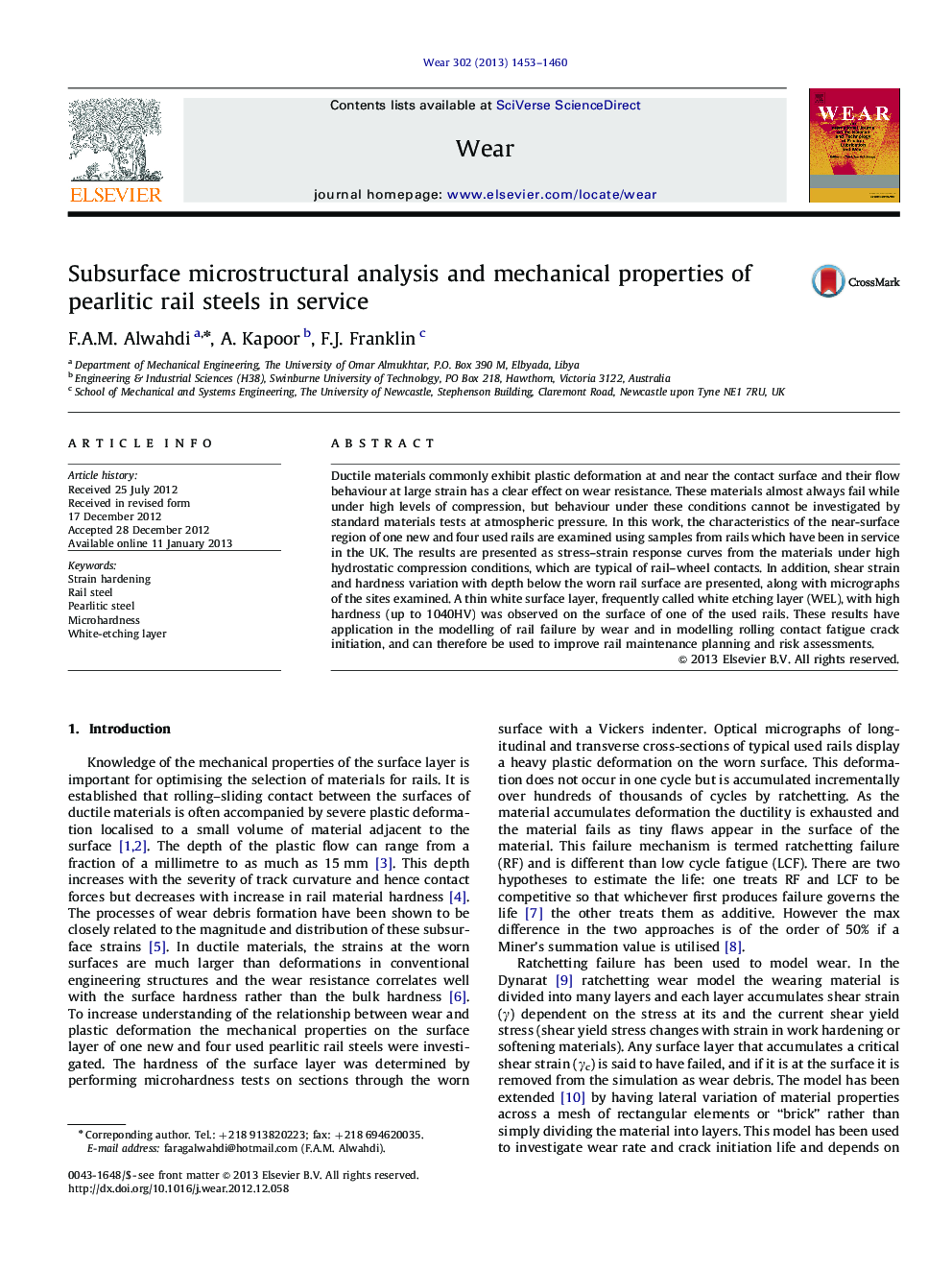| Article ID | Journal | Published Year | Pages | File Type |
|---|---|---|---|---|
| 617730 | Wear | 2013 | 8 Pages |
Abstract
Ductile materials commonly exhibit plastic deformation at and near the contact surface and their flow behaviour at large strain has a clear effect on wear resistance. These materials almost always fail while under high levels of compression, but behaviour under these conditions cannot be investigated by standard materials tests at atmospheric pressure. In this work, the characteristics of the near-surface region of one new and four used rails are examined using samples from rails which have been in service in the UK. The results are presented as stress-strain response curves from the materials under high hydrostatic compression conditions, which are typical of rail-wheel contacts. In addition, shear strain and hardness variation with depth below the worn rail surface are presented, along with micrographs of the sites examined. A thin white surface layer, frequently called white etching layer (WEL), with high hardness (up to 1040HV) was observed on the surface of one of the used rails. These results have application in the modelling of rail failure by wear and in modelling rolling contact fatigue crack initiation, and can therefore be used to improve rail maintenance planning and risk assessments.
Related Topics
Physical Sciences and Engineering
Chemical Engineering
Colloid and Surface Chemistry
Authors
F.A.M. Alwahdi, A. Kapoor, F.J. Franklin,
